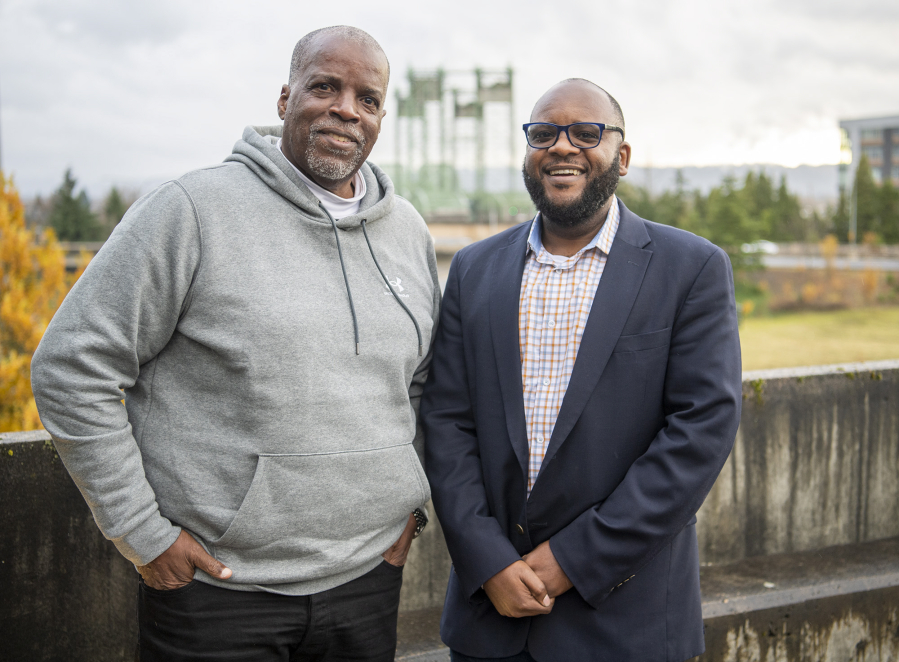Johnell Bell, the Interstate Bridge Replacement Program’s principal equity officer, likes to say, “You can’t know equity unless you know history.”
Equity has not historically been a primary concern on transportation projects — look no further than when part of Portland’s historically Black Albina neighborhood was destroyed in the creation of the Rose Quarter and Interstate 5.
Greg Johnson, the program’s administrator, knows the harms of transportation projects firsthand; his family was forced to move so a highway could be built on their homes’ land.
Equity, Johnson and Bell say, is not just a box to be checked off, but an integral part of the program, which they hope will set that standard for future projects, creating a blueprint others can follow.
“I think that some of the things that we’re doing will get duplicated around the country,” Johnson said. “Having a principal equity officer, a principal climate officer, those things are new and different for transportation projects and mega projects in general.”
Defining equity
The Interstate Bridge Replacement Program defines equity in two categories: process equity and outcome equity.
Process equity focuses on marginalized and underserved communities having power and influence in the planning process.
In pursuing process equity, the replacement program established an equity and community advisory group and holds virtual meetings with captioning, American Sign Language and translation services in addition to in-person ones.
Miriam Halliday, the CEO of Workforce Southwest Washington and a member of the equity advisory group, said that program leaders showing up to advisory group meetings and listening to the group speaks loudly.
“The leaders of this project are showing up for these long, long meetings in the evenings and listening and providing updates directly,” said Halliday. “That goes a long way.”
Outcome equity is demonstrated by a fair distribution of the project’s impacts and benefits.
“There are communities that have felt the negative impacts of having an interstate come through their community, and they saw none of the benefits,” Johnson said. “(T)here were never women, African Americans and other groups who were able to participate and benefit from that construction.”
With a looming skilled worker shortage, connecting with those from different backgrounds and individuals in middle and high school and presenting working in the trades as a viable career path is essential and provides stable jobs, they said.
“How do we get folks from poverty to prosperity?” Bell asked. “Because of the span of this program and how many jobs it will create, we can move the dial for a lot of communities.”
Criticisms
Some argue, however, that the program is not going far enough to pursue equity.
Metro Councilor Mary Nolan voted against endorsing the modified locally preferred alternative bridge plan in July, in part because light rail is not extending to Clark College, which would primarily benefit low-income travelers.
Johnson says that homes would be destroyed if the line was extended to Clark College.
“It’s a balancing act, because these decisions were not made in a vacuum,” Bell said.
Going forward
Both Jasmine Tolbert, president of Vancouver’s NAACP, and Halliday view the groundwork being laid as positive, but they said they need to see the talk and planning translated into action.
“They’ve made a lot of promises,” Tolbert said. “I think organizations like mine and others will be around to make sure that they’re held accountable to ensure that they’re still maintaining what they said they would.”
Tolbert declined to answer when asked if concerns of equity were heard and valued by project leadership.
Bell agrees that the planning is important, but it’s the results that really matter.
“It’s not about concrete and steel,” Bell said. “Ultimately, I think the lasting impact of this project will be how many folks do we get from poverty to prosperity. To me, that’s going to be the most meaningful result of this project.”




